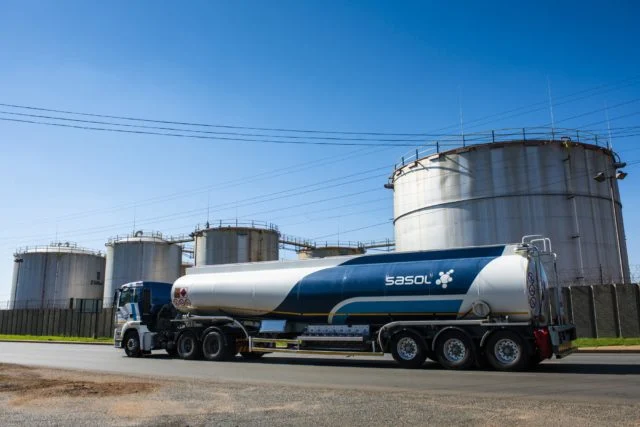Sasol and ArcelorMittal South Africa (AMSA) have signed a joint development agreement (JDA) to develop carbon capture technology to produce sustainable fuels and chemicals.
The partnership also includes plans to revitalise ArcelorMittal’s inoperative steel plant in Saldanha Bay to produce and export green steel manufactured without fossil fuels through green hydrogen and other processes.
Under the JDA, the companies will study two potential projects:
- The Saldanha green hydrogen and derivatives study, exploring the region’s potential as an export hub for green hydrogen and subsequent products and green steel production.
- The Vaal carbon capture and utilisation (CCU) study to use renewable electricity and green hydrogen to convert captured carbon from AMSA’s Vanderbijlpark steel plant into sustainable fuels and chemicals, such as ammonia.
“The study will gauge whether we can produce green hydrogen to supply the relevant plants, with a key focus on producing ammonia for export. We see a spike in demand for these exports as the world shift to decarbonising. South Africa has a huge competitive advantage given its natural endowments,” said Sasol’s executive vice president Priscillah Mabelane.
The Vaal CCU study will use up to 1.5 million tonnes a year of unavoidable industrial CO2 captured from ArcelorMittal South Africa’s Vanderbijlpark Works.
The CO2 will then be transported to the Sasolburg and Ekandustria operating facilities and, together with green hydrogen, will eventually replace natural gas as a feedstock to produce sustainable chemical products.
“These potential projects are an important kick-start to our decarbonisation journey and create an exciting opportunity to contribute to the South African government’s aspirations to transition to a green economy,” said AMSA chief executive officer Kobus Verster.
In addition, Sasol signed a Memorandum of Understanding (MOU) with Freeport Saldanha Industrial Development Zone to develop a globally competitive green hydrogen hub and ecosystem within Saldanha Bay.
Saldanha Bay is an industrial development zone for a municipal area that includes seven towns, meaning these projects could bring thousands of jobs to its communities.
“By maximising the utilisation of our installed assets, we will also be stimulating economic growth in our host communities, which is just as important,” said Verster.
Sasol said that this partnership would be the leading contributor to the development of Southern Africa’s green hydrogen economy, with the opportunity to incubate local and export opportunities for green hydrogen and green hydrogen derivatives.
It added that both initiatives have the potential for ArcelorMittal South Africa to be the first African green flat steel producer using green hydrogen by producing direct reduced iron (DRI) via the Midrex facility at its Saldanha Works, while also reducing the carbon footprint of its flagship Vanderbijlpark Works.
Sasol and ArcelorMittal South Africa (AMSA) have signed a joint development agreement (JDA) to develop carbon capture technology to produce sustainable fuels and chemicals.
The partnership also includes plans to revitalise ArcelorMittal’s inoperative steel plant in Saldanha Bay to produce and export green steel manufactured without fossil fuels through green hydrogen and other processes.
Under the JDA, the companies will study two potential projects:
- The Saldanha green hydrogen and derivatives study, exploring the region’s potential as an export hub for green hydrogen and subsequent products and green steel production.
- The Vaal carbon capture and utilisation (CCU) study to use renewable electricity and green hydrogen to convert captured carbon from AMSA’s Vanderbijlpark steel plant into sustainable fuels and chemicals, such as ammonia.
“The study will gauge whether we can produce green hydrogen to supply the relevant plants, with a key focus on producing ammonia for export. We see a spike in demand for these exports as the world shift to decarbonising. South Africa has a huge competitive advantage given its natural endowments,” said Sasol’s executive vice president Priscillah Mabelane.
The Vaal CCU study will use up to 1.5 million tonnes a year of unavoidable industrial CO2 captured from ArcelorMittal South Africa’s Vanderbijlpark Works.
The CO2 will then be transported to the Sasolburg and Ekandustria operating facilities and, together with green hydrogen, will eventually replace natural gas as a feedstock to produce sustainable chemical products.
“These potential projects are an important kick-start to our decarbonisation journey and create an exciting opportunity to contribute to the South African government’s aspirations to transition to a green economy,” said AMSA chief executive officer Kobus Verster.
In addition, Sasol signed a Memorandum of Understanding (MOU) with Freeport Saldanha Industrial Development Zone to develop a globally competitive green hydrogen hub and ecosystem within Saldanha Bay.
Saldanha Bay is an industrial development zone for a municipal area that includes seven towns, meaning these projects could bring thousands of jobs to its communities.
ALSO READ: Shell to resume operations at Forcados oil export.
“By maximising the utilisation of our installed assets, we will also be stimulating economic growth in our host communities, which is just as important,” said Verster.
Sasol said that this partnership would be the leading contributor to the development of Southern Africa’s green hydrogen economy, with the opportunity to incubate local and export opportunities for green hydrogen and green hydrogen derivatives.
It added that both initiatives have the potential for ArcelorMittal South Africa to be the first African green flat steel producer using green hydrogen by producing direct reduced iron (DRI) via the Midrex facility at its Saldanha Works, while also reducing the carbon footprint of its flagship Vanderbijlpark Works.
Source: Business Tech

